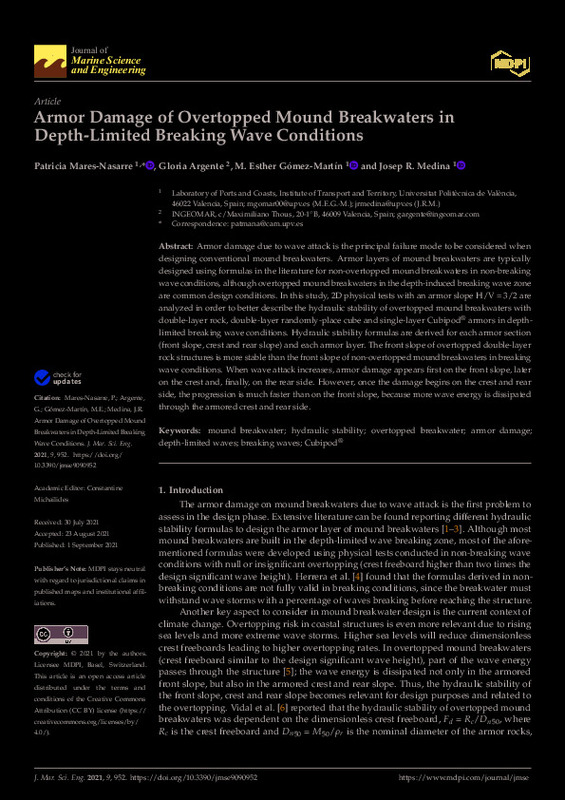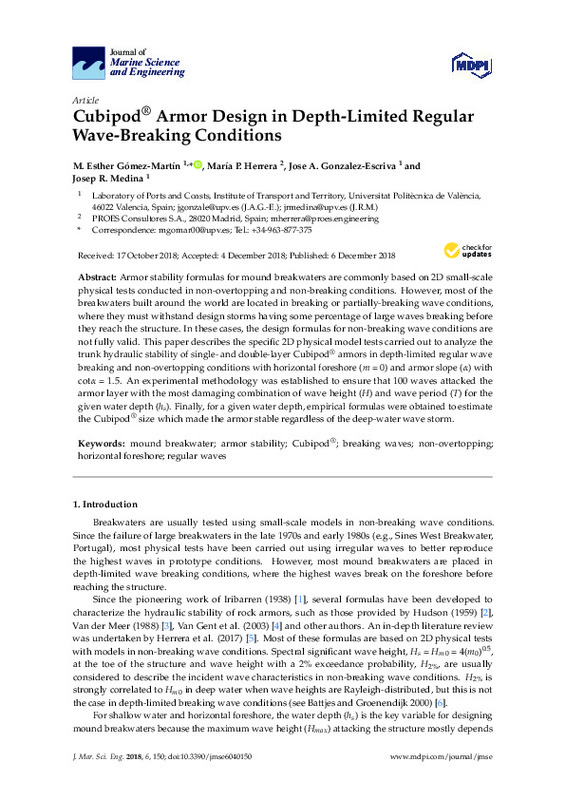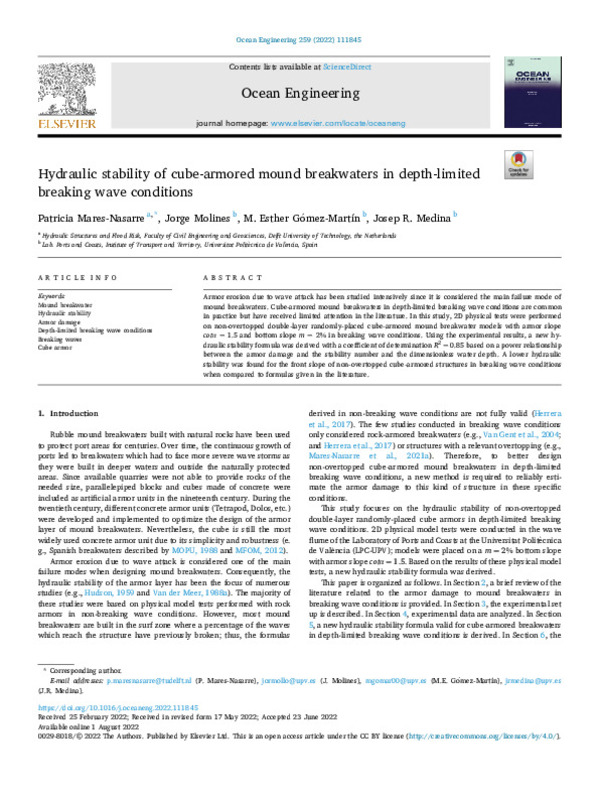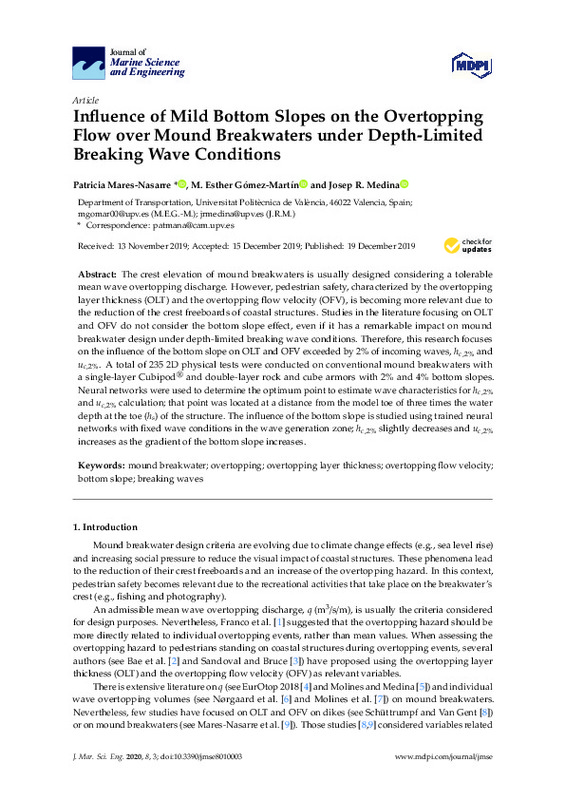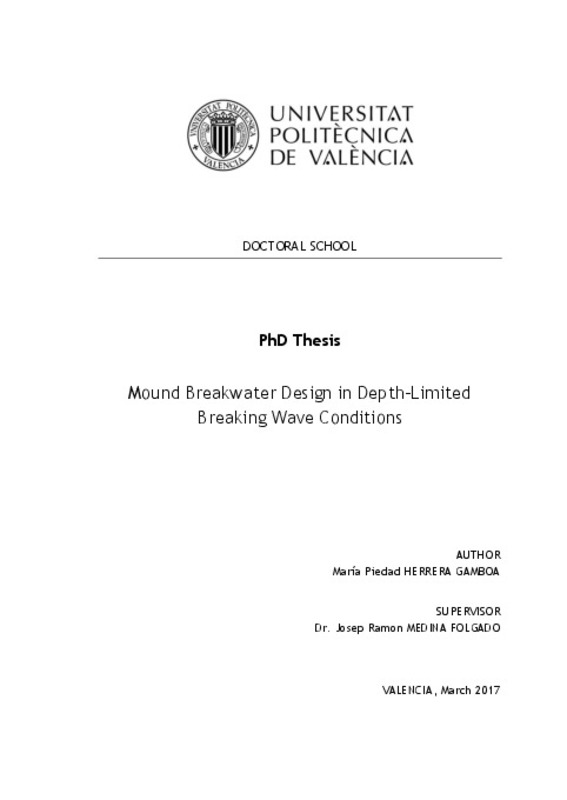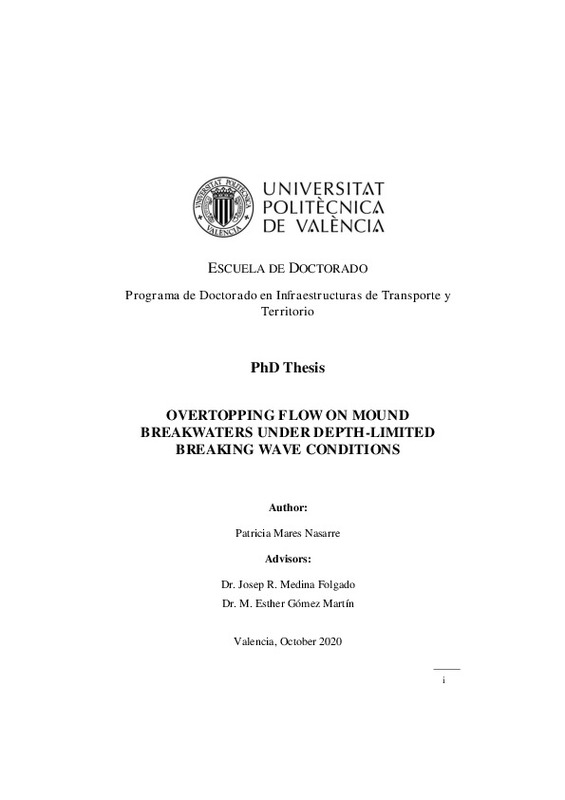

Listar por palabra clave "Breaking waves"
RiuNet: Repositorio Institucional de la Universidad Politécnica de Valencia
- RiuNet repositorio UPV
- :
- Listar por palabra clave
JavaScript is disabled for your browser. Some features of this site may not work without it.
Buscar en RiuNet
Listar
Mi cuenta
Ayuda RiuNet
Admin. UPV
Listar por palabra clave "Breaking waves"
Mostrando ítems 1-6 de 6
-
Mares-Nasarre, Patricia; Argente, Gloria; GÓMEZ-MARTÍN, M. ESTHER; Medina, Josep R. (MDPI AG, 2021-09)[EN] Armor damage due to wave attack is the principal failure mode to be considered when designing conventional mound breakwaters. Armor layers of mound breakwaters are typically designed using formulas in the literature ...
-
GÓMEZ-MARTÍN, M. ESTHER; Herrera, Maria P.; Gonzalez-Escriva, J.A.; Medina, Josep R. (MDPI AG, 2018)[EN] Armor stability formulas for mound breakwaters are commonly based on 2D small-scale physical tests conducted in non-overtopping and non-breaking conditions. However, most of the breakwaters built around the world are ...
-
Mares-Nasarre, Patricia; Molines, Jorge; GÓMEZ-MARTÍN, M. ESTHER; Medina, Josep R. (Elsevier, 2022-09-01)[EN] Armor erosion due to wave attack has been studied intensively since it is considered the main failure mode of mound breakwaters. Cube-armored mound breakwaters in depth-limited breaking wave conditions are common in ...
-
Mares-Nasarre, Patricia; GÓMEZ-MARTÍN, M. ESTHER; Medina, Josep R. (MDPI AG, 2020-01)[EN] The crest elevation of mound breakwaters is usually designed considering a tolerable mean wave overtopping discharge. However, pedestrian safety, characterized by the overtopping layer thickness (OLT) and the overtopping ...
-
Herrera Gamboa, María Piedad (Universitat Politècnica de València, 2017-06-08)The design of rubble mound breakwaters usually focuses on the main armor layer. A review of the existing literature reveals that different equations are used to design rock armors in non-breaking wave conditions. However, ...
-
Mares Nasarre, Patricia (Universitat Politècnica de València, 2021-02-22)[ES] El cambio climático y la conciencia social sobre el impacto de las infraestructuras en el medio está llevando a la necesidad de diseñar diques en talud con cotas de coronación reducidas frente a eventos de rebase más ...
Mostrando ítems 1-6 de 6

Universitat Politècnica de València. Unidad de Documentación Científica de la Biblioteca (+34) 96 387 70 85 · RiuNet@bib.upv.es


